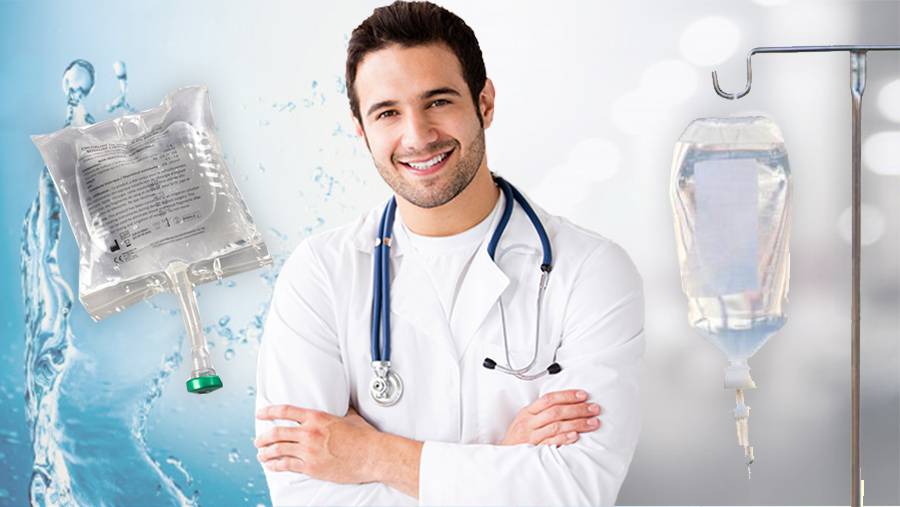
Hello
Select Address

Cleansing happens to be one of the first steps of wound care. From injuries inflicted at the playground during your childhood days to major roadside accidents, wound irrigation is the first and the most crucial step. If it is a minor cut or injury that could be treated with the first aid kit at home, you must be trying to irrigate the wound all by yourself! So, what it takes to irrigate a wound?
Wound irrigation involves the clearing away of environmental debris as well as necrotic tissue from the wound site to speed up the healing process. The most common way to go forward with this task is using sterile saline water. Now, what is this solution and why is it so broadly used?
The wide popularity of sterile saline water is manifested by its virtues jotted down in the following points:
• Sterile saline water is a non-toxic isotonic solution and hence gentle enough not to damage the healing tissues.
• Being saturated (0.9% sodium chloride) it neither takes fluid from the wound bed nor adds to it.
• There are no possibilities of allergies occurring from this cleaning solution
What happens when normal water is used to irrigate wounds?
The use of regular water in wound irrigation could prove to be detrimental to the cells of the wound site. Cells could burst as the water would cause them to undergo lysis. Moreover, normal water could be absorbed by the wound bed through osmosis causing it to exude more! Valuable materials from the wound bed might be lost with intracellular fluid movement. Above all, plain water causes more pain resulting in the need for analgesics.
Benefits of saline water from the pages of History
Since the times seawater worked out to be reparative on the wounds of fishermen, Hippocrates had begun to include salt in medicines. Renaissance doctors advised skin patients to take salt baths! Thus, the use of salt is therapeutic and has been used for centuries to fulfill wound healing purposes.
What is sterile water?
To put it lucidly, sterile water is one that is free from all microorganisms like bacteria, fungi, spores, etc. It, however, needs to be noted that sterile water is not distilled water (but the converse may be true). Distilled water is free from minerals like salt, calcium, and iron too. Thus ‘sterile’ and ‘distilled’ water vary both in their process of making and constituents!
How are Sterile and Saline solutions made?
The widely used wound irrigation solution is the sterile saline water (with 0.9% sodium chloride) that is non-toxic. Both sterile and saline water can be made through a rather simple procedure. To prepare a saline solution –
• Each cup of tap water is to be added with 1/4th teaspoon of salt.
• The solution is to be boiled (for 20 minutes at 121 degrees Celsius).
• The use of iodized or table salt is not recommended as they undergo a lot of processing which cuts down their purity!
To prepare sterile water -
• Fill a pressure cooker with water and boil it for a minimum of 20 minutes.
• It needs to be assured that temperatures should not rise above the normal boiling point.
• Water should boil at 121 degrees Celsius or 250 degrees Fahrenheit
Why choose between ‘sterile’ and ‘saline’ water when both are useful for irrigating wounds?
Since both the saline and sterile water are available commercially, the former, for all practical purposes, is costlier than the latter. Therefore, saline water is avoided in cases where sterile water is sufficient!